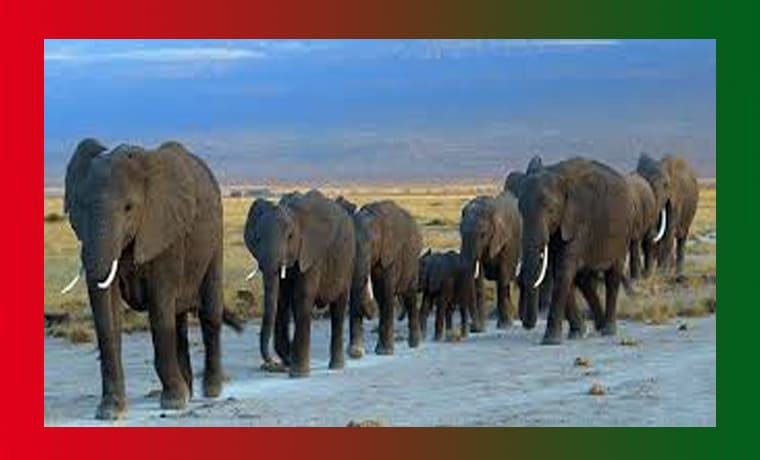Explore the meaning, uses, forms, synonyms, and antonyms, facts about ‘animal’.
Animal: Meaning, Synonyms, Antonyms, Essay, Facts
Animal: Meaning
The word ‘animal’ refers to a living organism that feeds on organic matter, typically having specialized sense organs and a nervous system, and able to respond rapidly to stimuli. Animals can be domesticated, such as pets, or wild, living in natural habitats like forests, oceans, and deserts. They are distinct from plants, fungi, and other life forms because of their ability to move voluntarily and interact with their environment in complex ways.
Use of “Animal” in a Sentence
The lion is a powerful ‘animal’ known as the king of the jungle.
Children often have a deep fascination with every ‘animal’ they encounter at the zoo.
Verb Form of “Animal”
The term “animal” is primarily used as a noun, and it does not have a common verb form in the English language. However, if one were to use it in a verb form, it would likely be in a very informal or metaphorical context, though this usage is rare and not widely recognized.
Adjective Form of “Animal”
The adjective form of “animal” is ‘animalistic’. This describes something that relates to or is characteristic of animals, often referring to primal, instinctual, or physical qualities.
Example in a sentence: His animalistic behavior during the competition was both impressive and intimidating.
Other Forms of “Animal”
Animality (noun): The quality or state of being an animal or having the characteristics of an animal.
Example: The artist’s work explores the fine line between humanity and animality.
Animalize (verb): To make something animal-like or to give it animal characteristics.
Example: The character in the story was animalized to represent his primal instincts.
Animalistic (adjective): Having characteristics typical of animals, especially in being physical and instinctual.
Example: The movie portrayed the antagonist with an animalistic ferocity.
Synonyms of “Animal”
- Creature: Any living being, typically referring to animals or humans.
- Beast: A large, often wild and dangerous animal.
- Fauna: The animals of a particular region, habitat, or period.
- Brute: A savagely violent or aggressive animal.
- Living organism: Any individual living entity, including animals.
Antonyms of “Animal”
Plant: A living organism that typically grows in the earth and absorbs nutrients from its surroundings.
Inanimate object: Anything that is not alive, such as rocks, furniture, or tools.
Mineral: A naturally occurring substance that is solid and inorganic, such as a rock or crystal.
Artificial: Something made or produced by humans rather than occurring naturally.
Essay on “Animal”
Introduction
The word ‘animal’ encompasses a vast and diverse group of living beings that inhabit almost every corner of the Earth. From the smallest insect to the largest whale, animals play crucial roles in ecosystems and human life. The study of animals, known as zoology, reveals the complexity of life forms and the intricate relationships between different species and their environments. This essay explores the concept of animals, their significance, and their roles in the natural world.
Superficial Meaning
At its most basic level, an animal is a living organism that moves, consumes energy food, and responds to its environment. Unlike plants, which typically produce their food through photosynthesis, animals must eat other organisms to survive. Animals range from simple organisms like sponges and worms to more complex beings like mammals, birds, and reptiles. They are classified into various groups based on characteristics like body structure, reproductive methods, and genetic makeup.
Deeper Meaning
Beyond the simple definition, animals hold a deeper significance in the context of life on Earth. They are integral to the balance of ecosystems, serving as predators, prey, pollinators, and decomposers. The interaction between animals and their environment ensures the flow of energy through the food chain and maintains the health of ecosystems.
In addition to their ecological roles, animals have been companions, sources of food, and symbols in human culture for millennia. Domesticated animals like dogs, cats, and livestock have been integral to human societies, providing companionship, labor, and sustenance. Wild animals, on the other hand, inspire awe, respect, and sometimes fear, reminding humans of the power and beauty of nature.
The study of animals has also led to significant scientific discoveries, particularly in understanding biology, genetics, and evolution. Animals share many genetic similarities with humans, making them valuable in medical research and in understanding the human body. The study of animal behavior, or ethology, has revealed insights into communication, social structures, and survival strategies that apply to both animals and humans.
The Role of Animals in Ecosystems
Animals play essential roles in maintaining the balance of ecosystems. For example, predators like lions and wolves help control the populations of herbivores, preventing overgrazing and ensuring that plant life thrives. Herbivores, in turn, play a crucial role in controlling plant populations and dispersing seeds. Scavengers like vultures and hyenas clean up the environment by consuming dead animals, preventing the spread of disease.
Pollinators like bees and butterflies are vital for the reproduction of many plants, including those that produce fruits and vegetables consumed by humans. Decomposers, such as worms and certain insects, break down dead organic matter, returning nutrients to the soil and supporting plant growth.
The loss of a single animal species can have a ripple effect throughout an ecosystem, leading to imbalances that affect other species and the environment as a whole. Conservation efforts aim to protect animal species and their habitats to preserve the intricate web of life on Earth.
Animals in Human Culture
Throughout history, animals have been deeply embedded in human culture. They appear in mythology, religion, art, and literature, often symbolizing qualities like strength, wisdom, or freedom. For example, the lion is often seen as a symbol of courage and royalty, while the owl represents wisdom.
In many cultures, animals are also revered as sacred beings or spiritual guides. Indigenous cultures often have strong connections with animals, seeing them as ancestors or protectors. Animals also play significant roles in rituals, ceremonies, and storytelling, teaching moral lessons or explaining natural phenomena.
In modern times, animals continue to influence human life in various ways. They are central to industries such as agriculture, entertainment, and science. The ethical treatment of animals has become an important issue, leading to movements advocating for animal rights and welfare.
Animals and Human Health
Animals have a profound impact on human health and well-being. Domesticated animals, particularly pets, provide companionship, reduce stress, and improve mental health. Studies have shown that interacting with animals can lower blood pressure, reduce anxiety, and increase feelings of happiness.
In the medical field, animals play a crucial role in research and the development of new treatments. Laboratory animals, such as mice and rats, are often used in experiments to study diseases, test drugs, and develop vaccines. While the use of animals in research is a subject of ethical debate, it has led to significant advancements in medicine.
Animals also contribute to human health through the production of food. Livestock such as cows, chickens, and pigs provide meat, dairy, and eggs, which are essential sources of nutrition for many people around the world. The relationship between humans and animals in agriculture is complex, involving issues of sustainability, ethics, and food security.
The Importance of Animal Conservation
As human activities continue to impact the environment, many animal species face the threat of extinction. Habitat destruction, pollution, climate change, and poaching are among the major factors contributing to the decline of animal populations. Conservation efforts are critical to protecting biodiversity and ensuring that animals continue to play their vital roles in ecosystems.
Conservation strategies include the establishment of protected areas, such as national parks and wildlife reserves, where animals can live and reproduce without human interference. Breeding programs in zoos and wildlife sanctuaries also help to preserve endangered species and reintroduce them into the wild.
Public awareness and education are key components of conservation efforts. By understanding the importance of animals and their roles in the environment, people can make informed decisions that contribute to the protection of wildlife and natural habitats.
Conclusion
In conclusion, the word ‘animal’ represents a vast and diverse group of living organisms that are essential to life on Earth. Animals play crucial roles in ecosystems, human culture, and health, and their conservation is vital for the sustainability of the planet. Understanding and respecting animals is not only important for their survival but also for the well-being of humans and the environment. The intricate relationships between animals, humans, and the environment highlight the interconnectedness of all life forms and the need for a harmonious coexistence
FAQs About the Word “Animal”
Q: What is the meaning of the word “animal”?
A: The word refers to a living organism that feeds on organic matter, has specialized sense organs, and can respond to stimuli.
Q: Can “animal” be used as a verb?
A: The word is primarily used as a noun and does not have a common verb form.
Q: What is the adjective form of “animal”?
A: The adjective form is ‘animalistic’, describing something that relates to or is characteristic of animals.
Q: What are some synonyms for “animal”?
A: Synonyms for “animal” include creature, beast, fauna, brute, and living organism.
Q: What are the antonyms of “animal”?
A: Antonyms include plant, inanimate object, mineral, and artificial.
Q: Why is animal conservation important?
A: Animal conservation is important to protect biodiversity, maintain ecosystem balance, and ensure the survival of endangered species.
Explore the meaning, uses, forms, synonyms, and antonyms, facts about ‘animal’.
Animal: Additional Information
The scientific classification of creatures is an intricate system that helps us understand the vast diversity of life. These beings are categorized under the kingdom ‘Animalia’, one of the major classifications in biology. Within this kingdom, living organisms are divided into various phyla, each representing a large group with similar physical structures, developmental stages, and genetic makeup.
At the top level, these beings belong to the ‘Animalia’ kingdom. This kingdom is further divided into several phyla. For instance, the ‘Chordata’ phylum includes beings that have a notochord, like mammals, birds, reptiles, amphibians, and fish. The ‘Arthropoda’ phylum, the largest of all, comprises insects, arachnids, and crustaceans, all of which possess exoskeletons and segmented bodies. The ‘Mollusca’ phylum includes soft-bodied beings, many of which have shells, such as snails, clams, and squids. In the ‘Annelida’ phylum, segmented worms like earthworms and leeches are found, while the **Cnidaria** phylum includes beings such as jellyfish and corals, known for their specialized cells used in capturing prey.
Beyond the phylum, creatures are classified, as orders, families, genera, and species. For instance, within the Chordata phylum, there are classes like Mammalia (mammals), Aves (birds), and Reptilia (reptiles). This hierarchical classification, also known as taxonomy, is crucial for organizing and studying the multitude of living organisms by grouping them based on shared traits and evolutionary history.
Creatures have evolved various adaptations that allow them to survive and thrive in their specific environments. These adaptations, which can be physical, behavioral, or physiological, ensure that they can meet the demands of their habitats. For instance, physical adaptations are visible in the way Arctic foxes blend with the snow due to their white fur, helping them evade predators and sneak up on prey. Similarly, some butterflies, like the viceroy, mimic the toxic monarch butterfly to avoid being eaten.
Behavioral adaptations are actions taken by beings to ensure survival. Many birds, such as the Arctic tern, migrate thousands of miles between breeding and wintering grounds to take advantage of seasonal food availability. Bears hibernate during the winter to conserve energy when food is scarce. Nocturnal beings, like owls, are active at night to avoid predators and extreme daytime temperatures.
Physiological adaptations, involving internal body processes, are equally important. Desert creatures like camels can withstand extreme temperatures by conserving water and regulating their body heat. Some snakes produce venom that can immobilize prey or deter predators. Deep-sea fish have adapted to the dark ocean depths by developing enhanced photosensitivity in their eyes, allowing them to see in near-total darkness.
These adaptations result from natural selection, where traits that improve survival and reproduction are passed down through generations, leading to the evolution of species perfectly suited to their environments.
Different types of diets among beings play a crucial role in maintaining the balance of ecosystems. Some beings are herbivores, relying on plants like leaves, stems, flowers, and fruits for their sustenance. For example, cows, deer, and elephants primarily consume plant matter. These herbivores help regulate plant populations, preventing any single species from dominating the landscape. They also disperse seeds through their droppings, contributing to plant reproduction and the spread of vegetation.
Carnivores, on the other hand, primarily eat other beings. Lions, wolves, and sharks are examples of carnivores that regulate the populations of prey species, preventing overpopulation and maintaining ecological balance. Omnivores, such as bears, humans, and pigs, consume both plant and animal matter, contributing to the stability of ecosystems by controlling both plant growth and animal populations.
Detritivores, such as earthworms, vultures, and certain insects, feed on dead organic matter, playing a vital role in breaking down dead material and recycling nutrients back into the soil, supporting plant growth. Insectivores, like anteaters, frogs, and many birds, specialize in eating insects, helping control insect populations and contributing to plant pollination.
These dietary habits are integral to the ecosystem, ensuring that resources are utilized efficiently and that the balance of nature is maintained. The loss of any one type of consumer could lead to significant disruptions in the food chain, underscoring the importance of biodiversity in sustaining ecological stability.
Communication among living beings is crucial for various aspects of life, from reproduction and social bonding to territory establishment and survival. Creatures communicate using vocalizations, body language, chemical signals, and visual displays. Vocalizations, for example, are used by birds to attract mates and establish territory, while mammals like whales and dolphins use complex sounds to communicate over long distances in the ocean. Insects such as crickets produce sounds by rubbing their wings or legs together to attract mates or warn of danger.
Body language is another form of communication. Dogs, for instance, use tail wagging, ear position, and body posture to express emotions like happiness, fear, or aggression. Many lizards perform push-ups or display their colorful dewlaps to assert dominance or attract mates, while honeybees perform a “waggle dance” to inform other bees about the location of a food source.
Chemical signals, such as pheromones, are widely used among creatures for communication. Ants leave pheromone trails to guide other members of the colony to food sources, while female moths release pheromones to attract males from long distances. Many mammals use scent marking to establish territory and communicate reproductive status.
Visual displays are also common, with male peacocks displaying their colorful feathers to attract females and fireflies using bioluminescence to signal mates. Cuttlefish can change their skin color and pattern to communicate with others or to camouflage themselves from predators.
Communication is vital for reproduction, social structure, territory and resource management, and survival. It ensures that living beings can find and select mates, maintain group cohesion, establish hierarchies, and warn others of danger.
Living beings have been integral to human society for thousands of years, playing various roles ranging from companionship to labor, food production, and contributions to medicine and research. These roles have shaped human culture, economy, and daily life, making creatures essential partners in our journey through history. 0 0 0











